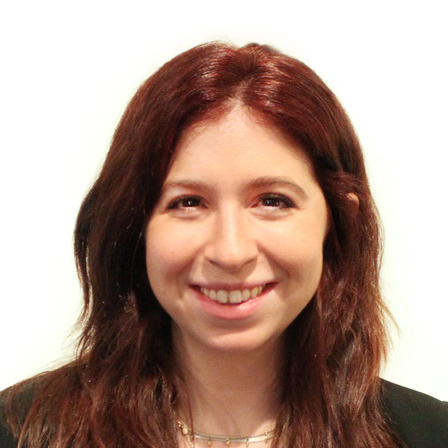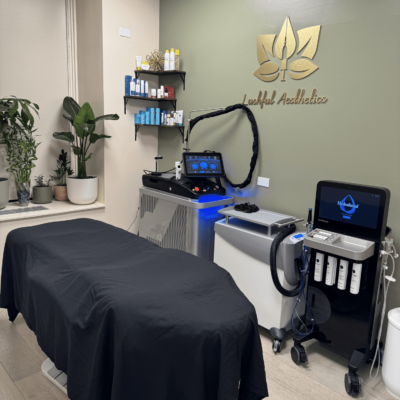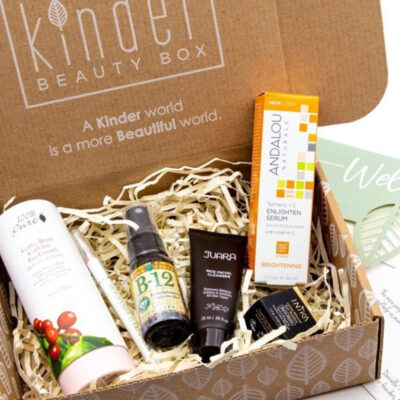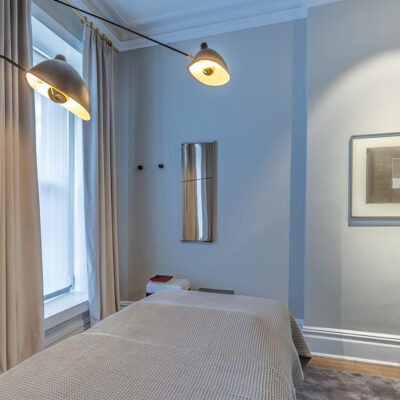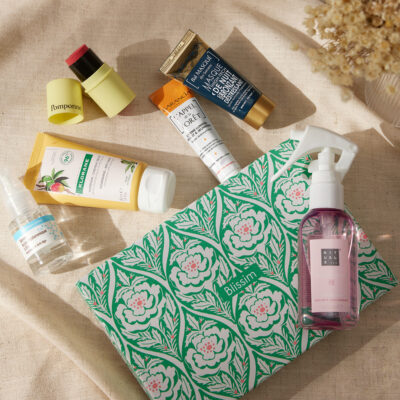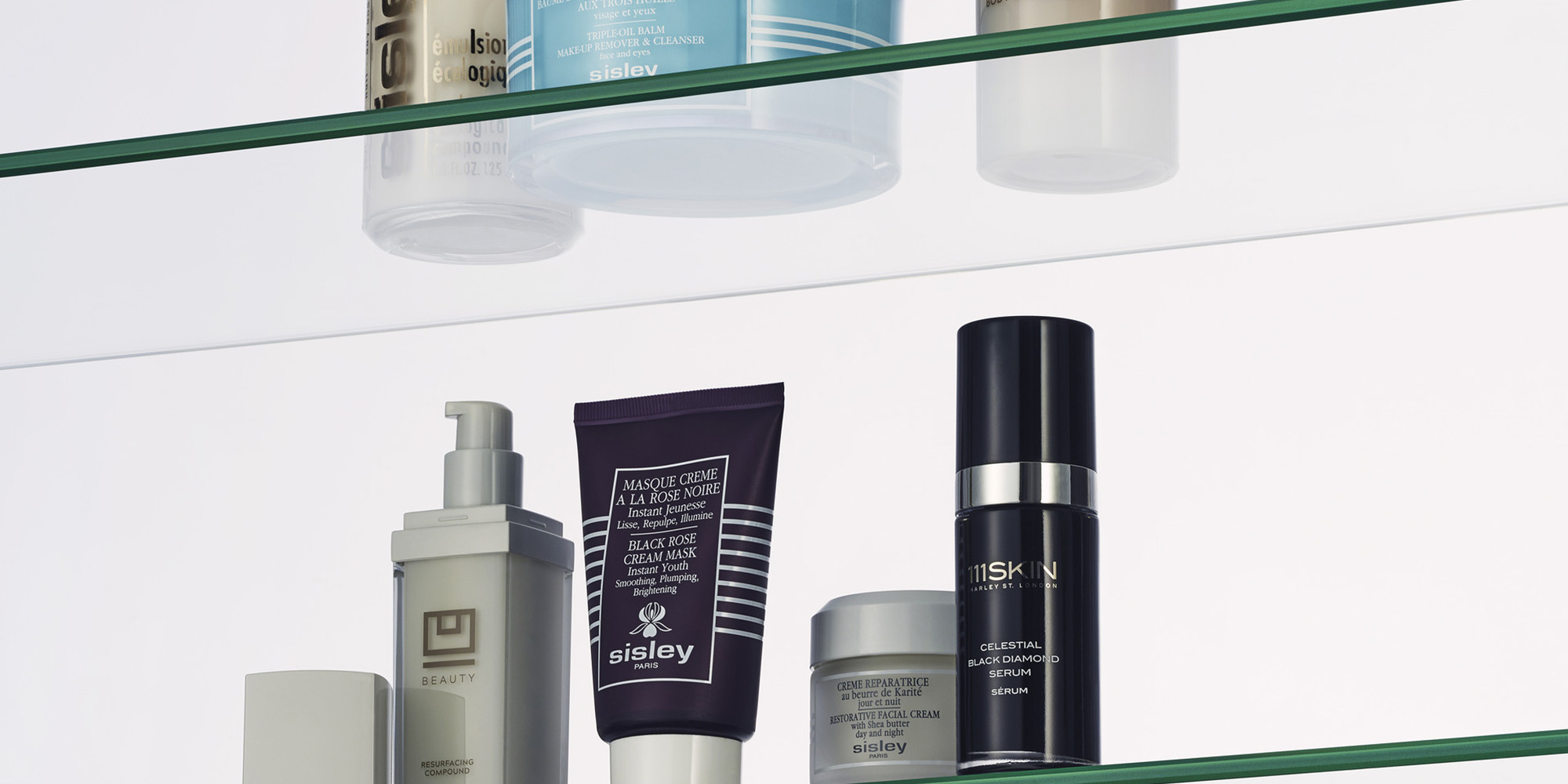
As Luxury Fashion And Beauty E-Commerce Reconstitutes, Newby Hands Tells Us How Net-A-Porter Stays Close To Beauty Shoppers
Well before Moda Operandi jumped into beauty in January, and Farfetch entered and left the category within about a year’s span, Net-a-Porter established itself as an authority in the premium beauty sphere. Newby Hands, contributing global beauty director at the luxury fashion e-tailer, distills its formula for success in beauty down to understanding its target audience and being an early mover in the category.
“We know the market we’re aiming for, we know what they want and that’s what we do,” she says. “I think we do it well, and we’ve done it for a long time.”
Net-a-Porter’s beauty assortment has swelled to over 5,000 from 150 products at its 2013 beauty debut. It’s sold approximately 7 million beauty products to date from brands like Dr. Barbara Sturm, Aesop, Dr. Lara Devgan, Oribe, 111 Skin, La Prairie, Charlotte Tilbury, Cire Trudon, Le Labo and Medik8. The e-tailer’s sales are propelled by VIP customers, a group it refers to as Extremely Important People or EIPs. Around 3% of Net-a-Porter’s customers, they account for almost half its business and spend a minimum of $12,000 per year.
As the landscape of luxury beauty e-commerce shifts, Net-a-Porter’s structure is shifting. Last week, Farfetch was given the regulatory green light to acquire a 47.5% stake in Yoox-Net-a-Porter from parent company Richemont. Yoox-Net-a-Porter’s portfolio includes Net-a-Porter, Mr. Porter, The Outnet and Yoox, and it will amplify Farfetch’s scale in luxury e-tail considerably. Farfetch projects it will reach revenue of approximately $2.5 billion and gross merchandise value of approximately $4.4 billion in 2023, up from $2.3 billion and $4.1 billion in 2022, respectively.
A Business of Fashion article on Farfetch’s deal for Yoox-Net-a-Porter estimates Farfetch will “add over $3 billion in gross merchandise volume to its marketplace by having access to the brands sold on Yoox-Net-a-Porter, which will also sell their products on the Farfetch marketplace.” The article points out that Net-a-Porter has repeatedly registered annual losses of more than $200 million.
Amid the changes, Beauty Independent spoke with Hands about Net-a-Porter’s beauty bestsellers, luxury beauty brands to watch and how she thinks the platform will evolve its beauty selection in the future.
At its 10-year mark, are you staying with what works in Net-a-Porter’s beauty assortment or refocusing?
We have real clarity from all our data now on what really works for us, what our customers want, what our beauty values are. We decided that, for the 10th anniversary, we were going to have a really good focus on what is beauty at Net-a-Porter. It’s about luxury. It’s about products that work, specifically products that come with efficacy and clinicals. It can come from something more natural, but those clinicals are really important to have for us.
We know what [customers] really want like devices, for instance. Ten years ago, I don’t even think devices were a category and now it’s one of our bestselling categories. We are always looking for new ones since our customers are certainly buying them.
We are also bringing on new brands as well. We just brought on Auteur and Eighth Day. So, it’s a case of having a good edit and then looking at other brands in a very considered way as to what works for us. It was time to literally take a breath and decide moving forward into the next hopefully 10 years what is Net-a-Porter beauty now as opposed what it was in 2013.
Is skincare still Net-a-Porter’s top beauty category?
It has shifted a bit. We’ve always been skincare-first and within that is devices. Our customer’s always been very interested in skincare and what we started to call “complexion,” which was everything from cleanser through to maybe foundation-based products, everything around having incredible-looking skin.
Recently we have seen traction in mascara and complexion products like foundation, primers, anything that gives that glow. Also, in multi-use products, so a lip-and-cheek and an eye-and-cheek. But skincare is still strong for us.
Our customer’s beauty regimen has to really deliver, and they now know that they can buy products and devices that really do work. That’s also filtering through into skincare. They want clinicals, they want efficacy. Some of the brands that I speak to have quite natural credentials, but they’re still investing in clinical trials because everybody knows now that you have to prove that it works. That’s a really good thing for the industry.
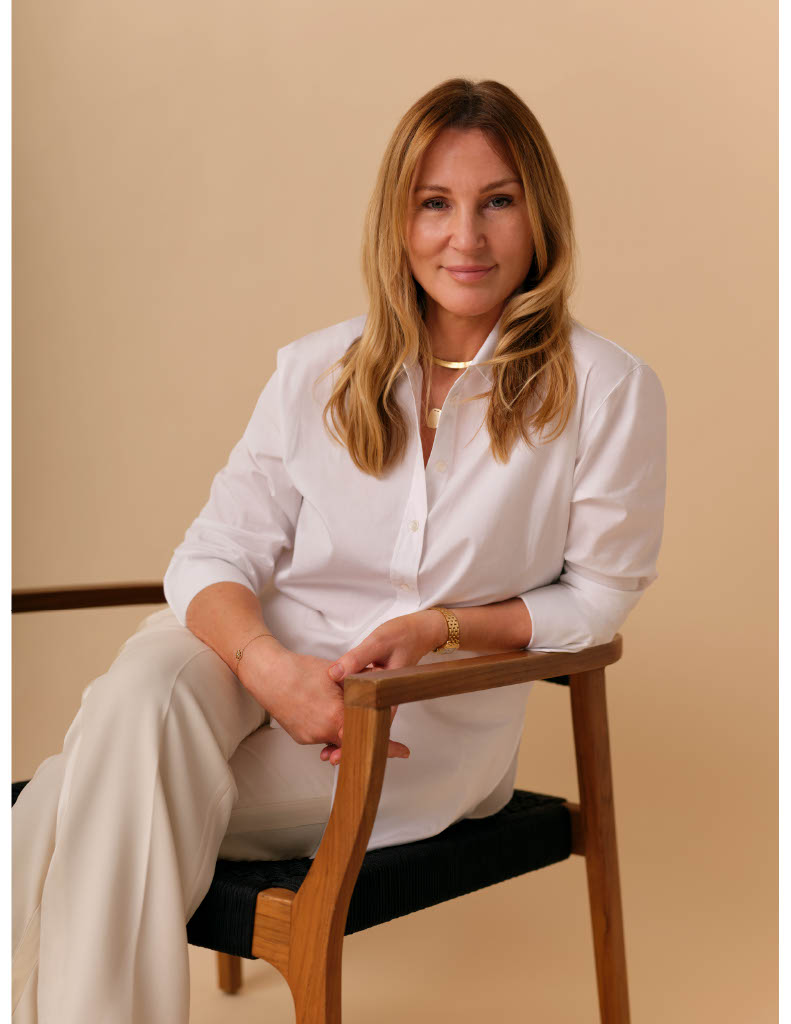
What are a few Net-a-Porter’s beauty bestsellers?
It’s really an all-star cast. We’ve got Dr. Barbara Sturm’s Hyaluronic Serum, Augustinus Bader’s The Rich Cream, La Mer’s Crème De La Mer and Charlotte Tilbury’s Pillow Talk Lip Liner. Diptyque’s Baies Candle is also on there. Our bestselling device brands would be Lyma, Dr. Dennis Gross and Shani Darden. LED is really strong for us.
Westman Atelier is also a strong performer. I think that it has so many strong points. It has very clear credentials, and [founder] Gucci [Westman] is hugely relatable. I think her strength on social is excellent. It’s quite an edited range, but, for me, I just see that as a range of what we want to wear.
What are the hallmarks of a great luxury beauty brand?
Apart from the obvious things like innovation and high efficacy being front and center, I think that the main two aspects are having clinicals and being open and transparent, especially about a brand’s sustainability credentials.
I also think, when it comes to luxury, it’s always about the details, it’s not about the broad strokes. It’s literally about the weight of a pot, the weight of the lid, the product’s texture. That’s one of the things that people often forget about. It’s the texture of a product that makes you automatically understand if it’s luxury or not. When women try something, they put it on the back of the hand, they rub it in and then they smell it. Every single point has to be considered. Nothing is too small.
Is Net-a-Porter interested in emerging brands?
Definitely. They need to have planned NPD, a good strategy and to be able to look ahead to where they want to be. With Vintner’s Daughter, I think we took that brand global and really helped build its cult success. That was seven or eight years ago, and it’s still one of our top sellers.
Our buying team looks everywhere. We often get people reporting back to us on brands. I first heard about Auteur from someone on our fashion team. It was being talked about at the shows a few seasons back. Of course, brands also reach out to us, but it’s not just a matter of being small and undiscovered or a cult brand or a big brand. It’s just looking for ones that we know will resonate with our customers are right for us.
What are recent buying behaviors that you’ve seen on the platform that have surprised you?
One big surprise is that devices are still part of the regimen of our global consumer. It literally is cleanse, moisturize, LED mask or micro-current. Obviously in lockdown, skin devices sold very well. We thought, OK, that’s it, everybody’s got them now. Then this year, products like the Lyma Laser and LED face masks, they’re all super strong again. It’s just part of what the customers uses now.
That is interesting because it definitely filters down to other markets. You can see that they are everywhere and in different price points. Personally, I’m very pleased that women are asking proof that things work. They’re digging deep, and I think that’s only good.
In certain areas our makeup sales, which haven’t always been as strong as in skincare, are doing well. I think it was predicted that as soon as we came out of lockdown that everybody was going to buy makeup. We’re seeing a shift more towards more natural makeup.
Who is Net-A-Porter’s core customer, and how are they shopping in beauty?
Our key customers are our EIPs or our Extremely Important People, and they are our highest-spending customer segment. We have a lot of contact with them. They’ll cross categories, so fashion and beauty are important to them. They are very educated. I would say the vast majority of them have a dermatologist or an aesthetician. They know what they want, but, often for them, they just want to know what to use. They want something quite practical. They want a regimen.
What they love about us is our edit, whether it’s an edit of a range we have or whether it is a new edit of brands we have. There’s quite an element of trust in. Innovation is hugely important to them and devices appeal to them because they have a dermatologist, and they have seen lasers in the clinic and now they can use LED at home. It makes total sense to them. These are technologies and innovations they already know about. Beauty is very much part of their life, and it’s part of what they buy.
What does it take for fashion retailers to succeed in beauty in the long term?
I can only talk about us. We were the first in this area to do it, and we keep a real strong focus on our customer. We have very clear criteria about what is a Net-a-Porter beauty brand because we know what our customer wants. Net-a-Porter is 23 years old and in that time our team of personal shoppers and all our global events that we do has given us just this real closeness of understanding of our customer.
So, even though beauty is 10 years old, we already had 13 years of knowledge from that customer. Therefore, it is front and center of everything we do. We can then have this halo around it of knowing what we can sometimes push, but within that area of knowing exactly what those global customers want. The longevity and that contact with the customer keeps us on track.
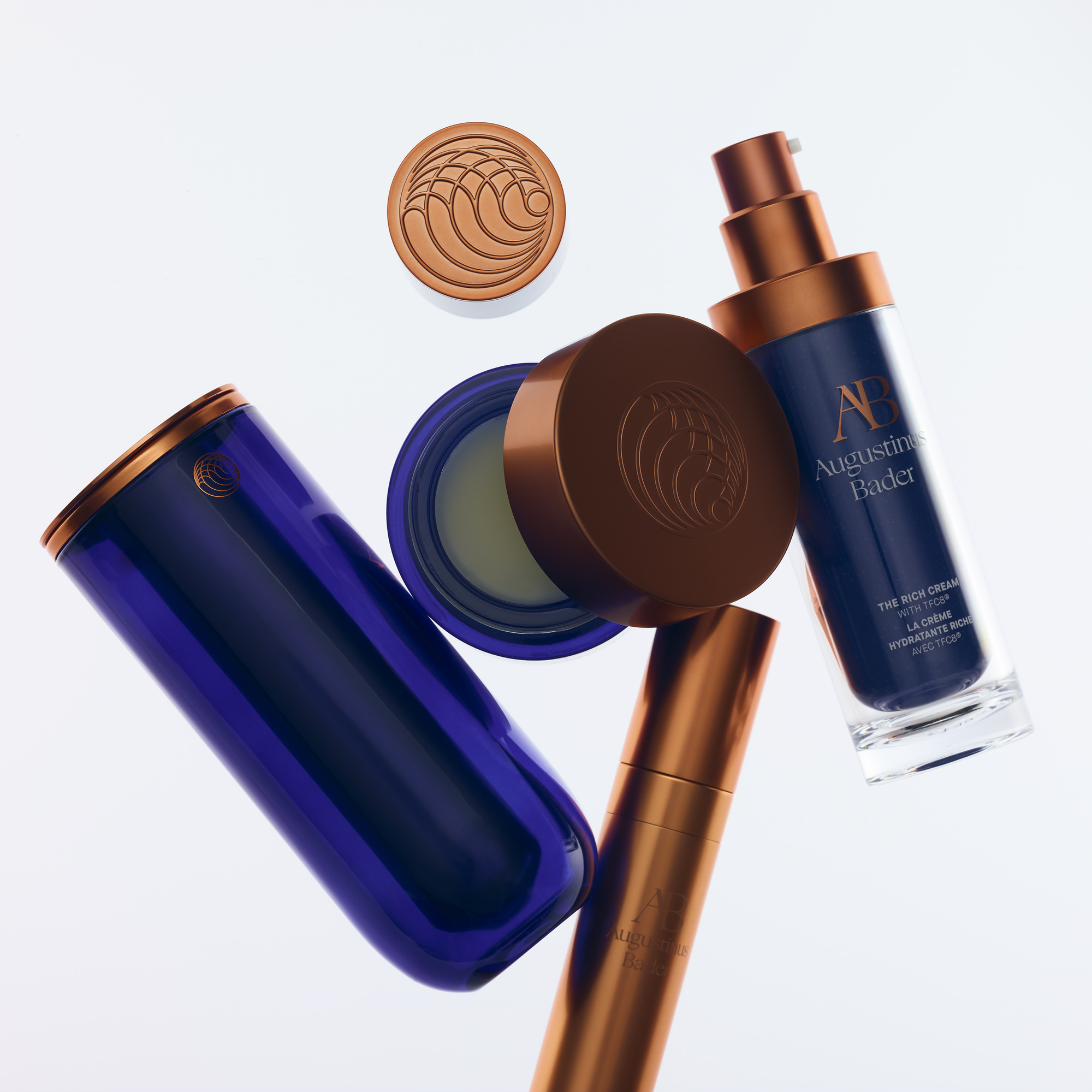
What’s the biggest change you’ve seen in the luxury beauty category over the years?
I would definitely say the innovation, particularly the innovation in the devices. I mean, it really has shaken up the industry because, if you are going for a facial now, it’s likely that everything you would have done in that facial you can now buy and use at home.
It’s shaken up what women will buy, how they look at their time, their regimen, what they expect from it and what they can achieve. That’s the reason why people want clinicals. I know myself that, when I was at home in lockdown, I was using an LED mask on a consistent basis, and I saw the difference. Suddenly it’s like, oh my god, this can be achieved, and we want more from everything. So, the beauty industry has to deliver. It has to be innovative.
Now, whether you choose to get that from a brand that’s super natural or whether you want to go for something that’s very high tech, that’s a choice. But, across the board, it’s actually results you can see. I see far more before-and-after pictures now with really impressive results. I think in the next few years we’re going to see some really exciting devices and products.
Ways of using things I think will evolve as well. Dr. Dennis Gross and Dr. Maram Zamani of MZ Skin just launched dedicated LED masks for the eye area. It’s innovation plus what we really want. It’s targeted, and it delivers. That is hugely powerful.
What’s a luxury beauty brand to watch?
I find Auteur really exciting and Eighth Day, which is from a California surgeon. Auteur is complete modern luxury. When I look at Auteur, everything about it is beautiful and the packaging just makes me smile.
But I think what is more interesting is what some of the more established brands, whether they’re five or 10 or 15 years old, are doing now. They already made an impact in the industry, but how do they keep their customers interested and how do they keep evolving?
MZ Skin is really cool. Dr. Zamani is a London-based doctor, and she does great skincare. She’s totally connected as to what women are looking for in their products. Her LED eye mask works. It’s not just high science for the sake of it. It’s got to be something which answers an issue that we have, something that makes our life easier and delivers better results.
How do you think Net-a-Porter’s assortment will evolve in the next 10 years?
It’s always evolving. We are seeing incredible innovation, especially in skin devices like I mentioned. Also, over the last 10 years, we’ve seen sustainability become key. I think it’s well over 60% of our customers now that count sustainability or the sustainability credentials of a company as key to their choice in beauty products.
When I came to Net-a-Porter, what really impressed me is that we have so many touchpoints with our customers globally. I recently hosted an event in London with some of our EIPs. I always hear from them what they want and don’t like. In lockdown, we were doing Zooms with our key founders every fortnight.
Again, with different global groups, from the personal shoppers to events, we have really close contact with our customers. Plus, we also have the data of global sales. So, that really determines our buy, and how we evolve will be dictated by how our customer evolves and what they are looking for.
